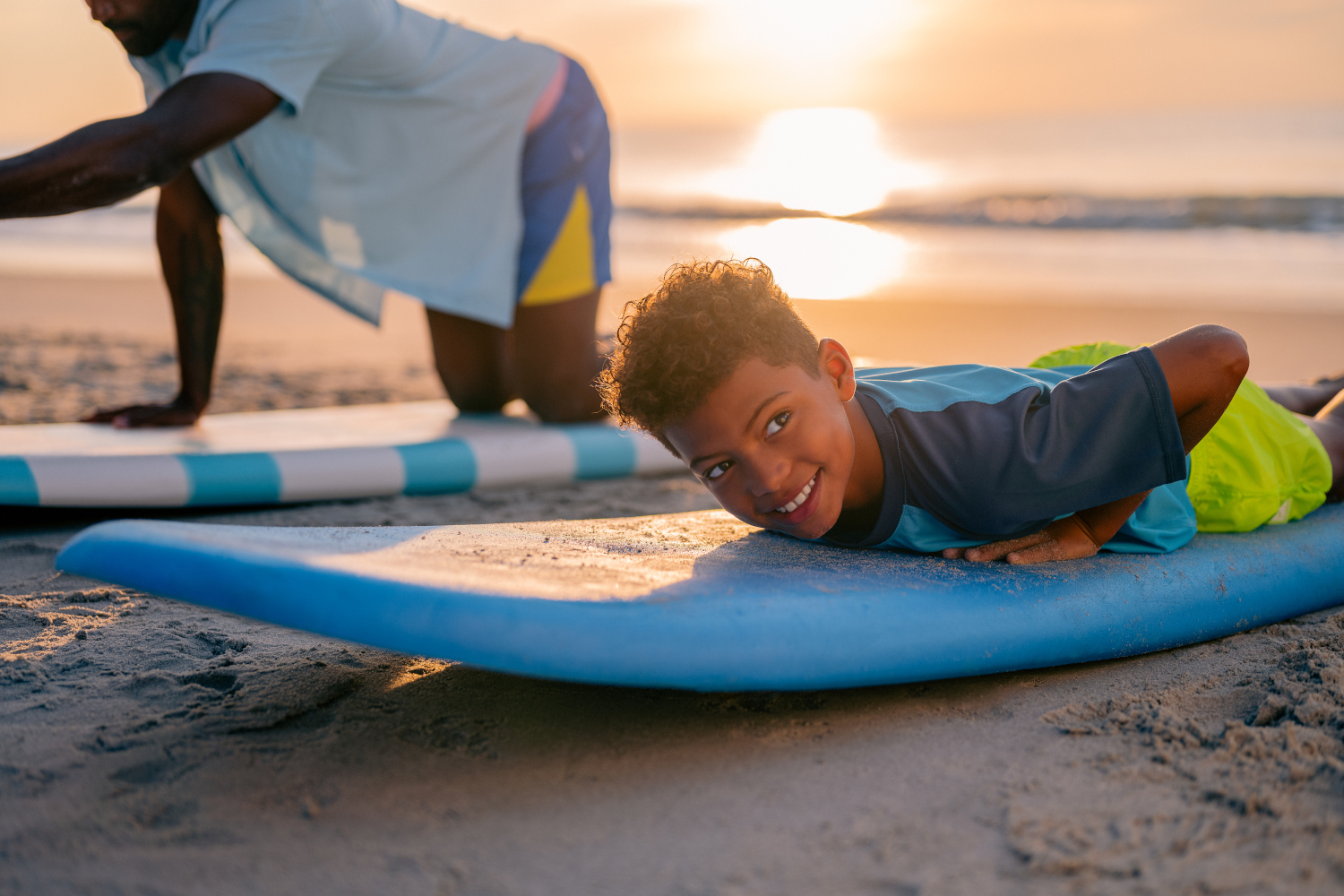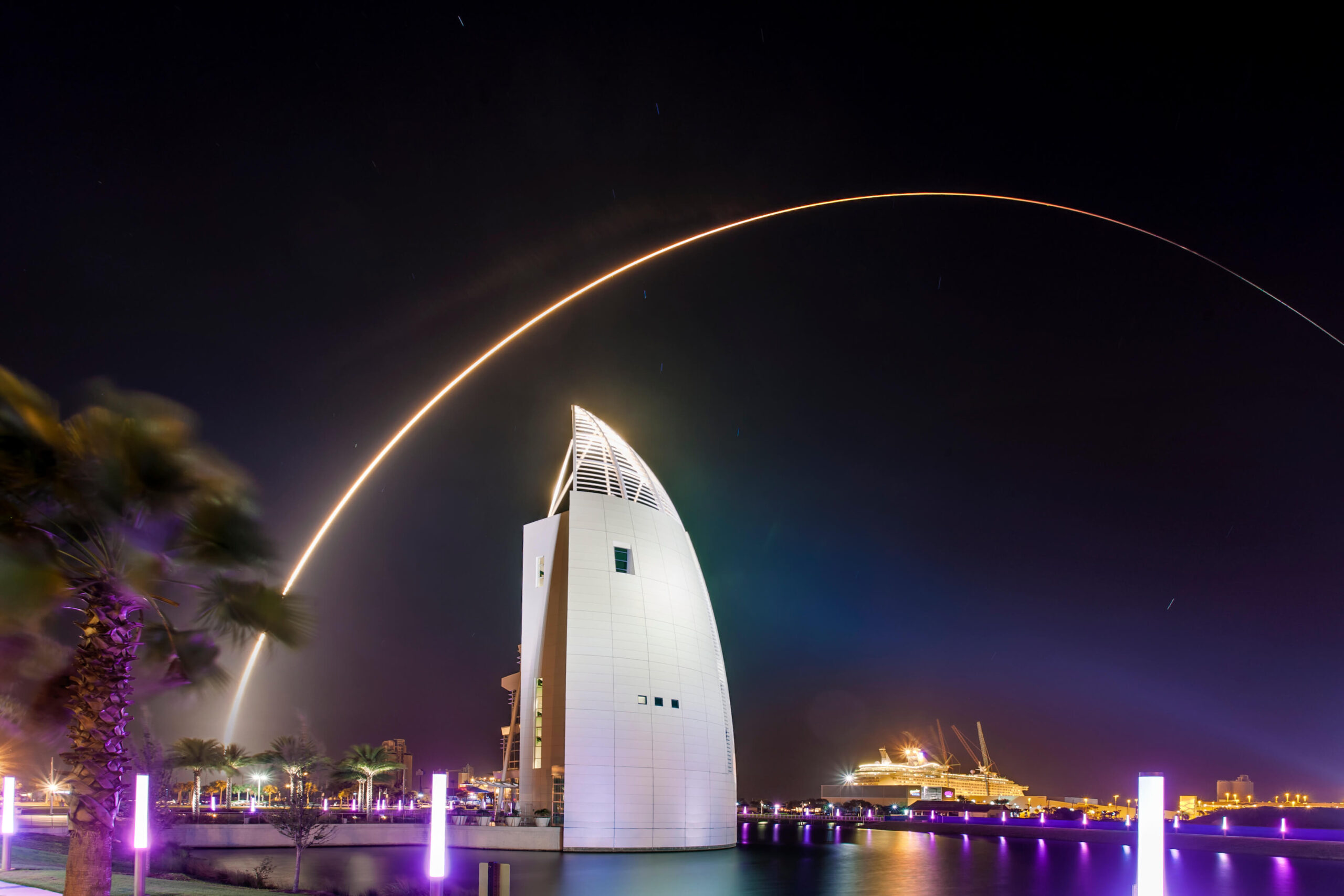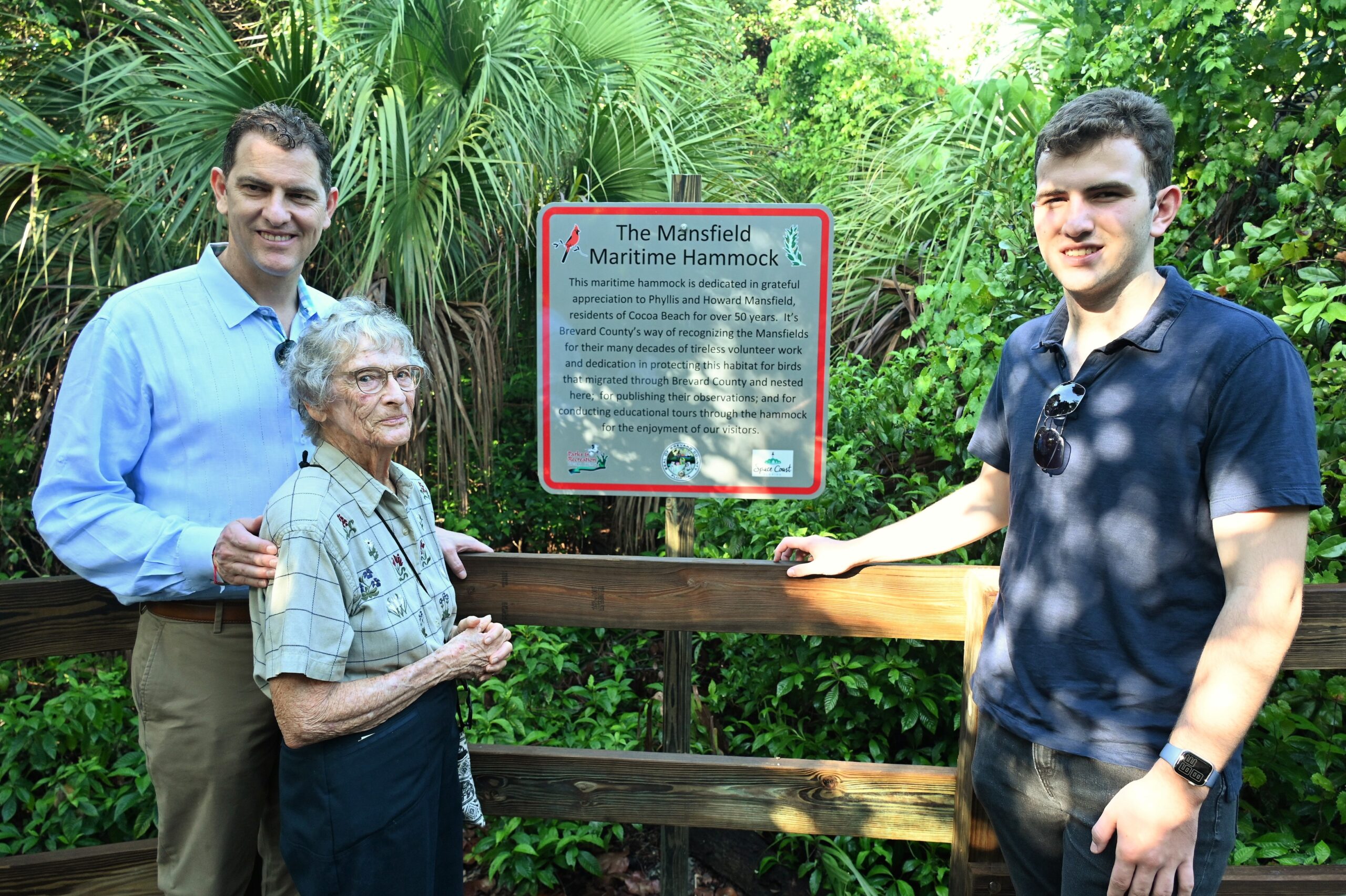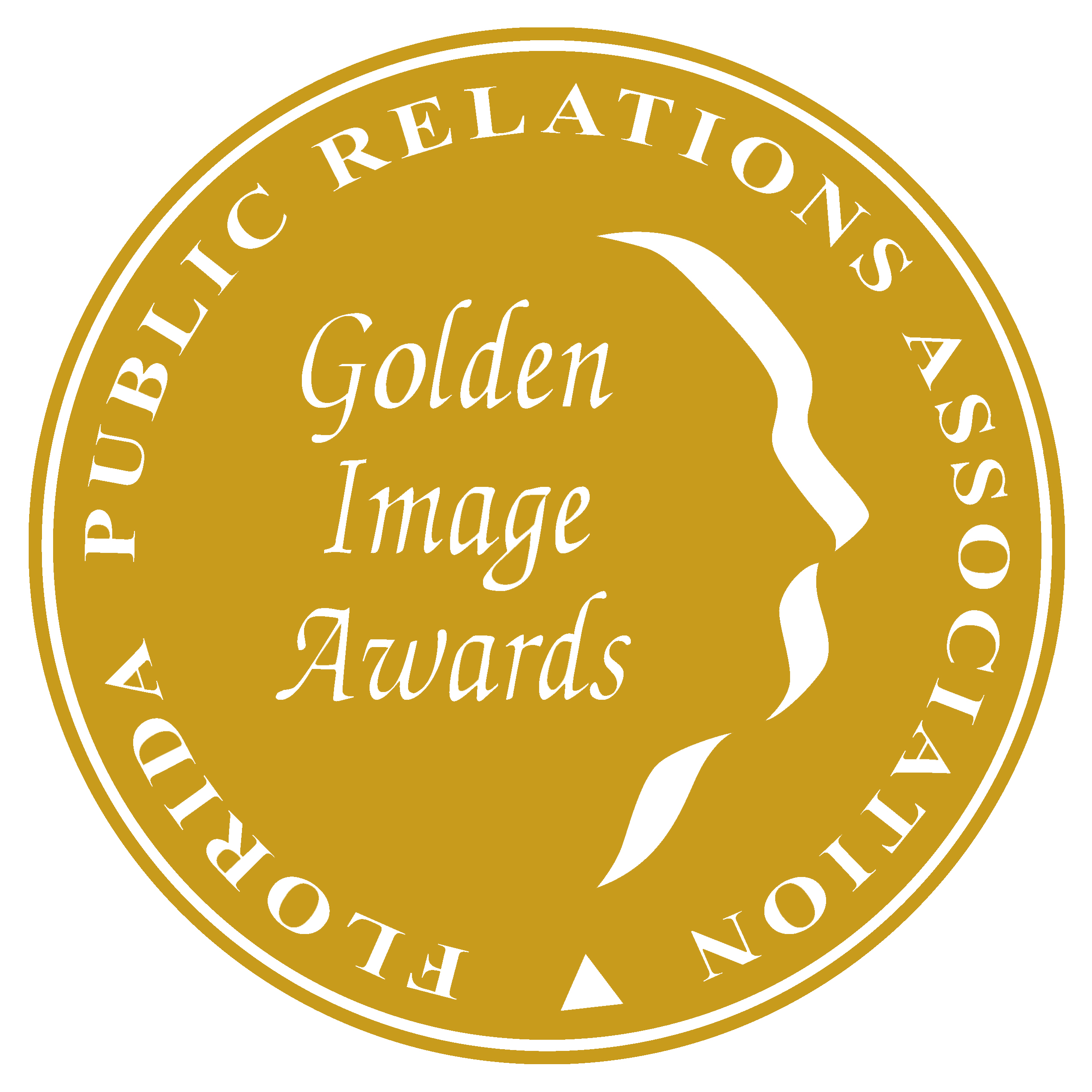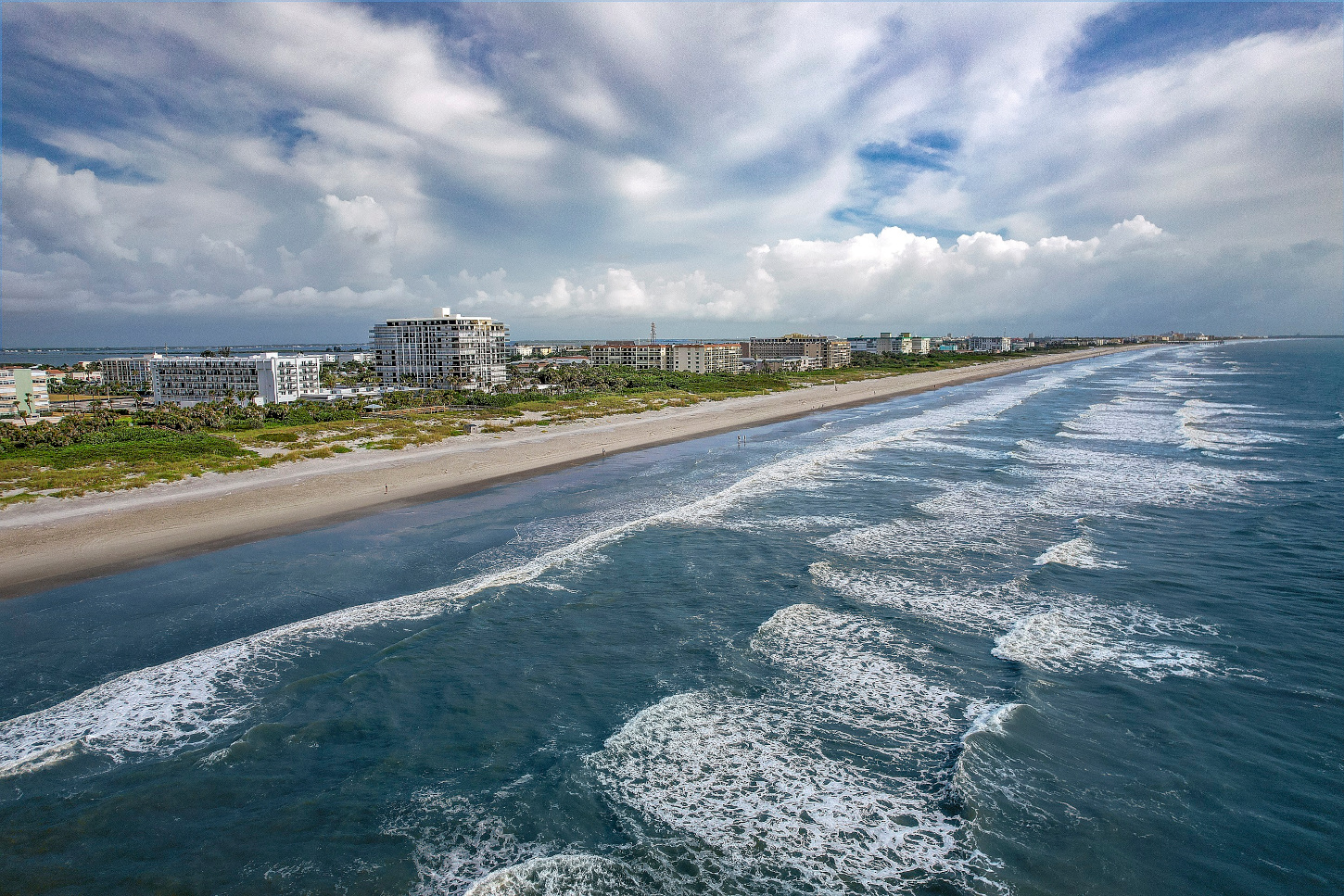FLORIDA’S SPACE COAST’S $39 MILLION BEACH RESTORATION PROJECT PROTECTS WILDLIFE WHILE PROTECTING WAY OF LIFE
COCOA BEACH, Fla. — One of Florida’s most popular surfside towns earlier this year added 4.7 million cubic yards of beach sand as part of a $39 million beach restoration project, just in time for the spring and summer travel seasons.
In a ceremony in Washington DC on February 25, Cocoa Beach was recognized for being one of only four U.S. beaches named a 2014 “Best Restored Beach” by The American Shore and Beach Preservation Association. Once a narrow, sandy strip lined with concrete seawalls, the iconic beach known for surfing and space exploration has expanded its shoreline by an impressive 160 feet of beach with natural sand dunes that support vital habitats for sea turtles, crabs and coastal birds.
“Get ready to be impressed,” said Florida’s Space Coast Executive Director Eric Garvey. “Our beach improvement program has dramatically enhanced the beach experience here, from surfing to sand-castle building to soaking in the sun.”
The project took a more natural and sustainable approach to restoring the beaches than what had been done on other Florida coasts. By using sand instead of seawalls, storm protection was improved for beachside residents and businesses, and minimized the impacts on wildlife habitats.
“With the success of the North Reach Project spanning from Cocoa Beach to Cape Canaveral, we have successfully created a way to keep sand on the beach and continue to protect our homes, businesses and communities from the devastating effects of storms,” said Vice Chairman, Jim Barfield, District 2 Commissioner, whose District includes the City of Cocoa Beach and Cape Canaveral.
“The North Reach Project is a perfect example of a beach restoration project that has proven its worth over and over again, sustaining our tourism, environment and driving our economy upward year after year.”
Florida’s Space Coast is considered by biologists to be the most important nesting area for loggerhead sea turtles in the western hemisphere. Loggerheads, which are the most common sea turtle in Florida and are classified as a threatened species, are at greatest risk from coastal development. But newly restored, wide and sandy beaches provide ideal nesting habitat for these turtles.
Brevard County’s North and South Reach Space Coast beaches including Cocoa Beach, Cape Canaveral and Indialantic, have benefitted from the federal project. Costing close to $39 million, the initial beach restoration process took three years to complete, placing 4.7 million cubic yards of beach-quality sand along 14 miles of shoreline.
Using innovative construction methods, specifically a near-shore sand rehandling area, allowed the North Reach project to be completed a year ahead of schedule and $700,000 under budget with minimal disturbance to both tourists and wildlife.
The restored beaches were tested in 2004 when hurricanes Charlie, Frances and Jeanne pounded the Space Coast. “Not one structure was taken by the waves on the 14 miles of restored beaches,” said Mike McGarry, environmental scientist for Brevard County. “Yet outside the restored beaches, several homes were lost. This provides some pretty compelling evidence that the project has been a success.”
Florida’s Space Coast officials continue to work with federal officials to secure an additional $5.4 million to finish the mid-reach section of the Space Coast, the third and final phase of the project. The mid-reach phase includes protections for Indian Harbour Beach, Satellite Beach and Melbourne. The project uses a combination of matching federal, state and local tourism tax investment.
About Florida’s Space Coast
Located 35 miles (56 km) east of Orlando, Florida’s Space Coast is home to Orlando’s closest beaches. Encompassing Cocoa Beach, Melbourne Beach, Palm Bay and Titusville, this family-friendly destination offers more than 10,000 guest rooms, and is an ideal, value getaway. Guests will discover 72 miles (110 km) of beaches, the longest stretch in the state and more than 250 square miles of wildlife refuge. It is home to one of the nation’s busiest cruise ports; is the nation’s East Coast surfing capital and the location of NASA’s Kennedy Space Center, where all 135 shuttle missions launched and rockets continue to launch on a schedule that’s busier than ever. The Space Coast is home to Space Shuttle Atlantis and is one of only four destinations nationwide where visitors can view an orbiter. For more information, contact the Space Coast Office of Tourism at (877) 572-3224 or visit www.visitspacecoast.com. Visit www.visitspacecoast.com/launches/to learn about upcoming rocket launches. Find us on Facebook at facebook.com/spacecoast. Follow us on Twitter at twitter.com/flaspacecoast.


